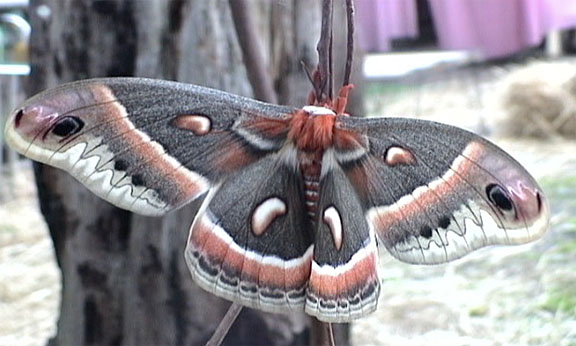More Photos Below!Gallery
This spring we played host to a big brown pellet. It was 1″x 3″ and a friend noticed it on a tree branch in our yard. It was a cocoon!
At the same time our friend Mike Woodruff had a big pellet of his own in his yard in Ann Arbor.
We both wondered what would become of them.
Well, within a few days of each other in early June we had our answers.
Mike’s turned into a Cecropia Moth.
And ours turned into a Polyphemus Moth.
We were only missing a Luna Moth and we would’ve had all 3 of the Giant Silkworm Moths of North America. They’re the biggest moths around!
(They aren’t good for making silk, however.)
Did you know that they don’t eat after they become a flying moth? And that they fly at night and only live for about 5 days. They look for a mate. …Phermones, baby! Then lay eggs, etc., and that’s all she wrote! I guess they then spend the rest of the summer as a caterpillar then winter over in their cocoon before becoming a moth.
Also, ours just bit a little hole in the end of the cocoon then crawled out—very huge. How did it fit thru that hole?
They then inflate their wings to full 5″ size by pumping fluid from their abdomen into their wings.
I advise anyone who likes this moth stuff to check out my related (brief) report on the wacky names of moths…
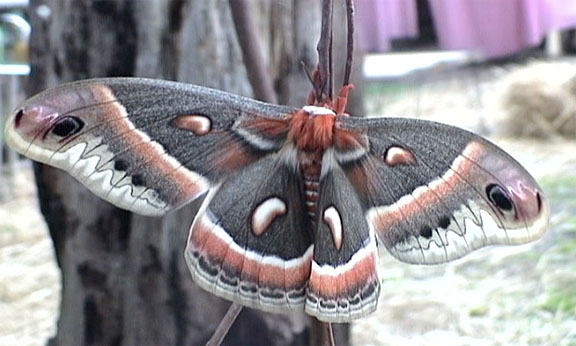
Cecropia from the front—it’s still pumping up its wings, I think.
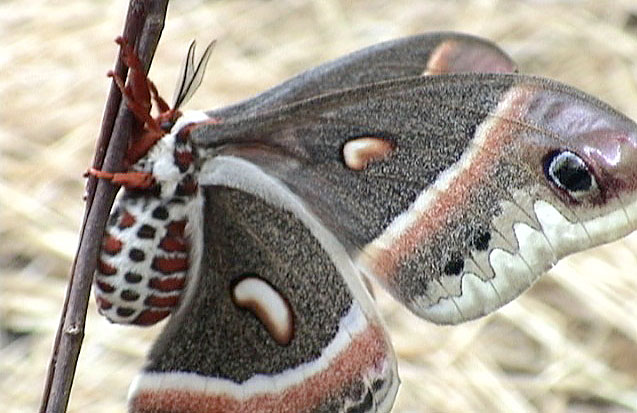
Mike’s cecropia from the side—abdomen still plump with wing juice!
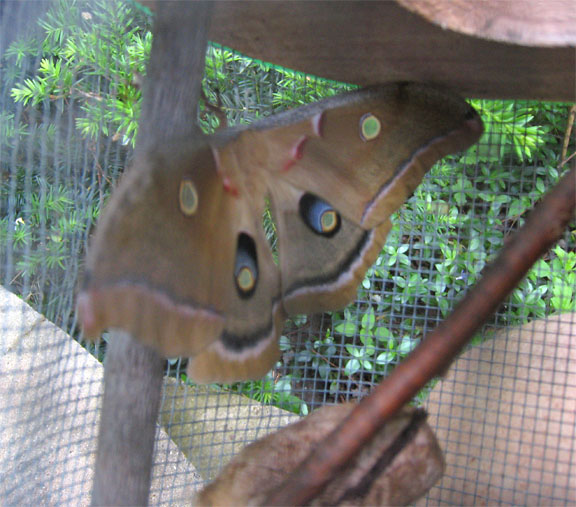
Our polyphemus in our bug cage—one morning, there it was!
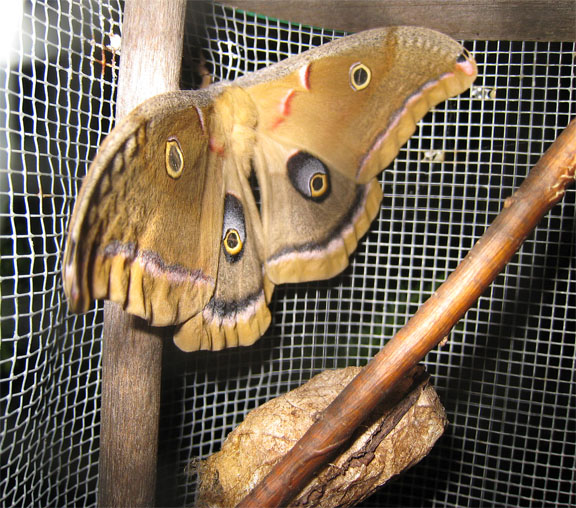
Flash photo of our polyphemus in the bug cage. We put our cocoon in there so we would be sure to see the moth if it ever came out. Note, you’re supposed to leave a cocoon out in the elements (so we left the cage out).
